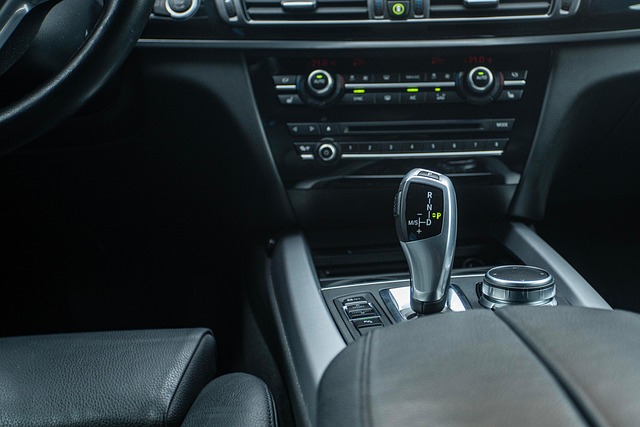Understanding what influences your car insurance premium is key to lowering it. Primary factors include:
– Driving History: Clean records lead to lower premiums.
– Vehicle Details: Type, age, make, model, safety features, and fuel efficiency impact costs.
– Location: Areas with higher accident rates or stringent laws may have increased costs.
Strategies to reduce insurance:
– Safe Driving Practices: Address speeding tickets, accidents, and risky behaviors.
– Vehicle Maintenance & Choices: Consider safer, more fuel-efficient models.
– Safety Courses & Defense Programs: These can lower rates by improving perceived driving behavior.
– Policy Bundling: Combine auto, home, life, or other policies with a single provider for discounts.
– Coverage Limits & Deductibles: Adjust these to balance savings and potential risks.
– Apply for Discounts: Leverage safe driver, good student, loyalty, and safety feature discounts.
– Regular Policy Reviews: Reassess needs every few years to avoid unnecessary protections.
Looking to lower your auto insurance premium? You’re not alone. Understanding how your driving habits, vehicle, and other factors influence costs is key. This comprehensive guide breaks down effective strategies to reduce your auto insurance premium. From evaluating driving behavior and understanding coverage needs to exploring cross-promotion opportunities with homeowner’s or life insurance, these tactics can help you save significant money.
Understanding Your Auto Insurance Premium Factors

Knowing what influences your car insurance premium is a crucial step in learning how to lower your Auto Insurance Premium. Several factors come into play when insurers calculate your rates, and understanding these can empower you to make informed choices that might reduce your costs. One significant factor is your driving history; accidents, traffic violations, and claims history can all affect your premium. A clean driving record typically translates to lower premiums.
Another key aspect is the type of vehicle you own. Insurers consider factors like age, make, model, safety features, and even fuel efficiency when determining rates. Older cars or those with fewer safety features might incur higher premiums. Additionally, where you live and drive plays a role; areas with higher accident rates or more stringent laws may result in increased insurance costs. Understanding these premium drivers allows you to explore strategies like driving safely, maintaining a good vehicle, and choosing a location-friendly insurance plan.
Evaluating Your Driving Habits and Behavior

Evaluating your driving habits is a powerful way to lower your auto insurance premium. Insurance companies often consider factors like driving history, miles driven per year, and frequent road trips as indicators of risk. By understanding your behavior on the road, you can make informed changes to save money. For example, if you have many speeding tickets or at-fault accidents, improving your driving record will reflect positively on your policy costs.
Simplifying your daily commute and reducing unnecessary mileage is another effective strategy. Many insurance providers offer discounts for low annual mileage, so consider carpooling, using public transport, or adopting a more efficient route to work. Additionally, avoiding late-night driving or high-risk situations can significantly impact your premium, as these behaviors are statistically linked to increased accidents.
Benefits of Safe Driving Courses and Defense Programs

Safe driving courses and defense programs are powerful tools for drivers looking to lower their auto insurance premiums. These initiatives, often promoted by insurance companies or independent organizations, offer a fresh perspective on risk management. By participating in such programs, individuals demonstrate a commitment to enhancing their driving skills and safety awareness, which can significantly impact their insurance rates.
In today’s competitive market, insurers are increasingly recognizing the value of responsible driving behavior. Completing safe driving courses can equip drivers with advanced techniques to navigate various road conditions, reduce the likelihood of accidents, and minimize claims. Defense programs, on the other hand, provide resources and guidance to help policyholders understand their rights and responsibilities, potentially lowering risks and enhancing claim management. As a result, insurance providers may offer substantial discounts to those who successfully complete these courses or enroll in defense programs, effectively showing how to lower your auto insurance premium.
The Impact of Your Vehicle's Make and Model

When considering how to lower your auto insurance premium, one significant factor is your vehicle’s make and model. Different cars have varying levels of safety features, performance capabilities, and overall value, which directly influence insurance rates. For instance, modern vehicles equipped with advanced driver-assistance systems (ADAS) like automatic emergency braking or lane-keeping assist are often viewed as safer by insurers, leading to lower premiums. Conversely, high-performance or luxury cars may carry higher insurance costs due to their potential for more extensive repairs and perceived increased risk of theft or damage.
Understanding the specific make and model of your vehicle allows you to evaluate if it’s contributing to higher insurance rates. By keeping this in mind, you can make informed decisions when choosing a car or modifying existing ones. Upgrading to a safer, more fuel-efficient model, for example, could result in substantial savings over time. Additionally, reviewing your policy and discussing potential discounts with your insurer based on your vehicle’s specifics is a strategic step towards reducing your auto insurance premium.
Insuring Multiple Vehicles and Drivers: Bundling for Savings

Insuring multiple vehicles and drivers under a single policy can lead to significant savings on your auto insurance premium. This strategy leverages the combined risk of several vehicles and drivers, which often results in lower rates from insurance companies. When you bundle, insurers perceive you as a more responsible driver because they assume a reduced chance of claims due to shared driving history and vehicle usage patterns.
By combining policies for multiple cars and drivers within your household, you can expect a substantial discount on each policy. This is a straightforward and effective way to lower your auto insurance premium. So, if you have several vehicles, don’t hesitate to explore the benefits of bundling for potential savings on your overall coverage costs.
Homeowner's and Life Insurance: Exploring Cross-Promotion Opportunities

Combining your home and life insurance policies with your auto insurance can be a strategic move to lower your overall premiums. Many insurance companies offer significant discounts when policies are bundled, as they perceive it as reduced risk and administrative costs. This cross-promotion opportunity allows you to negotiate better rates on all your insurance needs, especially if you’re already a loyal customer with one or more policies.
When exploring this strategy, research various providers to find the best deals. Compare not just the prices but also the coverage options, as some companies might offer more comprehensive auto, home, and life insurance packages at competitive rates. This approach can save you money in the long run, especially if you’re managing multiple policies with different insurers.
Choosing the Right Coverage Limits and Deductibles

When it comes to lowering your auto insurance premium, one of the most effective strategies is understanding and selecting the right coverage limits and deductibles. Coverage limits refer to the maximum amount your insurance will pay out in case of a claim, while deductibles are the amount you have to pay out-of-pocket before insurance kicks in.
Increasing your deductibles can significantly reduce your premium, as it lowers the overall risk for the insurer. However, remember that higher deductibles mean you’ll need to cover more costs upfront if you file a claim. Therefore, it’s crucial to balance savings with potential financial burden. Compare different coverage options and choose limits that align with your vehicle’s value, driving habits, and budget to ensure you’re adequately covered while minimizing premiums.
Utilizing Discounts Offered by Insurance Providers

Many insurance providers offer a range of discounts to attract and retain customers, which can significantly lower your auto insurance premium. These include safe driver discounts for those with clean driving records, good student discounts for young drivers, and loyalty or multi-policy discounts for long-term customers. Some companies also provide discounts for specific safety features in your vehicle, like anti-lock brakes or air bags. Understanding these options and applying for the relevant discounts can help you reduce your monthly payments.
When shopping around for insurance, don’t overlook the potential savings from different providers. Each insurer has its own set of discounts and policies, so comparing quotes from multiple companies is essential. You may also consider bundling your auto insurance with other policies, such as home or life insurance, to earn additional savings. By taking advantage of these incentives and keeping your driving record clean, you can effectively how to lower your auto insurance premium.
Regularly Review and Update Your Policy to Save Money

Regularly reviewing and updating your car insurance policy can significantly contribute to how to lower your auto insurance premium. By reassessing your coverage needs every few years, you can ensure that you’re not paying for unnecessary protections or features that you no longer require. Insurance companies often adjust their rates based on current market trends, risk assessments, and new safety technologies, so staying informed about these changes allows you to make necessary adjustments to your policy.
This process involves evaluating your coverage limits, deductibles, and the type of insurance you have. You might discover that raising your deductible can lead to lower monthly payments. Alternatively, if your vehicle has advanced safety features, you could qualify for discounted rates. Staying proactive in managing your policy helps not only save money but also ensures you have adequate protection when on the road.
